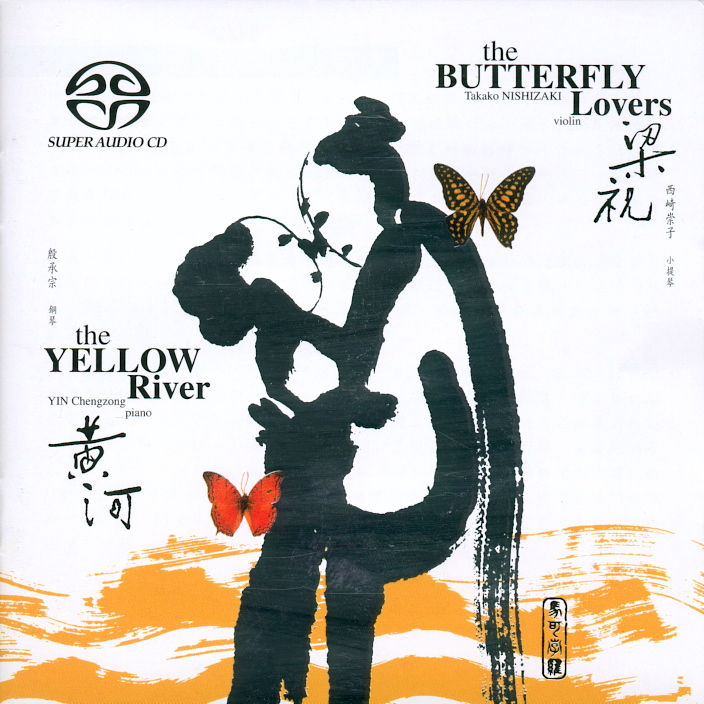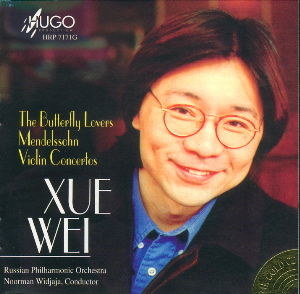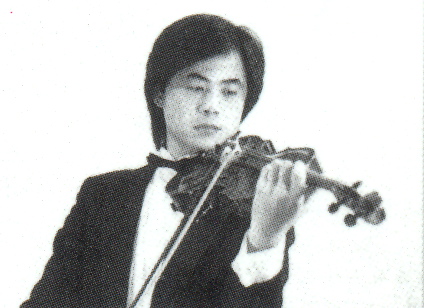The Butterfly Lovers Violin Concerto
- Details
- Created: Tuesday, 26 June 2007 13:09
- Hits: 4686

Two young students
from Shan Hai Musical Academy composed the Butterfly Lovers Violin Concerto
within a year in 1958. This single movement violin concerto is familiar to many
Chinese speaking community. The original score is written for a solo violin and
a western orchestra. The work has been adapted for various solo instruments
including erhu, pipa and piano. However, in my opinion the best version is
still the original one for violin. Not surprising, the work was originally
written for violin anyway.
After the premier in
Shan Hai, the work became very popular in Asia. I first listened to it during
my school days. Those cassettes I bought already not playable or lost. I
remember listening to the version played by the famous Japanese violinist
Takako Nishizaki. What I like about Nishizaki is her technical skill.
Especially the fast theme after the introduction, if not well played can sound
pretty clumsy.
Well, the Butterfly
Lovers story is very well known in the Chinese speaking community, but probably
not so in the non-Chinese speaking community. It is about a lady Zhu Ying-tai
who disguised as a man and went to study. It was common in ancient China where
boys were the ones given formal education. During her 3-year study she became
good friend of Liang Shan-bo, and their relationship developed. When they have
to part at the Eighteen-mile-Pavilion, Zhu told Liang that she wanted to marry
her sister (actually was herself) to him. She told Liang to propose the
marriage to her parents as soon as possible. A year later when Liang visited
her, he came to realise that it was actually Zhu he was marrying, and so happy
was he. Unfortunately, Zhu’s father had already arranged a marriage for her.
Liang felt very sad and fell sick and died. On the day Zhu was having her reluctant
marriage, she ran into her lover’s tomb and cried of her despair. Suddenly the
weather turns wild and the tomb opened. Zhu threw herself into the grave. The
couple then transformed into butterflies and was then happily together and
would never leave each other.
‘Butterfly Lovers’
essentially is a freeform single movement violin concerto. Based on musical
structure, it can be seen as 3 parts. First part is exposition, describing the
lovers. Second part is development; the music evolves based on the theme of the
objection of the marriage arranged by parents. The last part is the
recapitulation, where the main theme reappear and describing the dead lovers
transform into butterflies.
Hugo version of the
‘Butterfly Lovers’ further broke the music down into eight small sections:
introduction, main theme, studying together, parting at Pavilion, opposition to
an arranged marriage, meeting at the chamber, death of Liang and suicide of
Zhu, transformation into butterflies and coda.
The exposition part of
the music consisted of introduction, main theme, studying and parting. The
music begins with strings playing at their harmonics and harp’s lightly
plugging. The flute then has a long solo introduction. After the introduction
the violin sings the very familiar main theme. Follow on is a lively and happy
studying. The parting part is on the sad side, with cello and solo violin
beautifully exchanging melodies. Many subsequent Chinese concerto composers use
this same style of solo instrument and a cello exchanging musical ideas.
The development
section is very dramatic and tragic, centred on the themes of opposition of the
arranged marriage, the meeting at the chamber and finally the death of the
loving couple. Musically this section is very demanding on the players and the
conductor. In the meeting at the chamber section, again there is an exchange of
melodies between the solo violin and a solo cello, but this time the mood is
tragic. The exchange is quite demanding on the cello as there are large
shifting of fingering position. If the cellist does not handle properly it can
sounds quite awkward. The last portion of the development section where we have
the death of the Liang and the suicide of the Zhu are good tests on the ability
of the conductor to create a tragic and forceful climax.
The 3 versions of the
Butterfly Lovers that I am familiar with are:
Kong Zhao-hui solo
violin, The Central Philharmonic Orchestra of China, conducted by Hu Bing-zu;
Takako Nishizaki solo
violin, Shanghai Conservatory Symphony Orchestra, conducted by Fan Chengwu;
Xue Wei solo violin,
Russian Philharmonic Orchestra, conducted by Noorman Widjaja.


The quality of classical music recordings is affected by
far more factors than say pop recordings. Normally pop recordings you only get
one original singer, so most probably you will get just that recording. Classical
music, however, besides recording quality (which tends to be not so important),
the quality of the performance itself is affected by soloist, orchestra and
conductor. You can hardly, or almost impossible to find two identical classical
recordings by different performers. It is also difficult to get a recording
that will suit your taste for every aspect. Therefore there is always excuses
to get different versions of the same piece.
Back to the three
recordings I am familiar with.

 Kong Zhao-hui is at
present a violinist in the Singapore Symphony Orchestra. Technically he is very
good, and his style can be bold or gentle. His dynamic in opposition to an
arranged marriage and death of Liang and suicide of Zhu is the greatest among
the 3 soloists. Both the recording and the performers (soloist and orchestra)
contributed to a punchy music. Track 4 at 4’38” that timpani roll really hit me
deep into my heart. I have the XRCD version of this recording, and I believe
this will be the most expensive Butter Lovers!
Kong Zhao-hui is at
present a violinist in the Singapore Symphony Orchestra. Technically he is very
good, and his style can be bold or gentle. His dynamic in opposition to an
arranged marriage and death of Liang and suicide of Zhu is the greatest among
the 3 soloists. Both the recording and the performers (soloist and orchestra)
contributed to a punchy music. Track 4 at 4’38” that timpani roll really hit me
deep into my heart. I have the XRCD version of this recording, and I believe
this will be the most expensive Butter Lovers!

Xue Wei is currently a
Professor of violin at Royal Academy of Music. This recording of his he is
using a 1699 Stradivari made Kustendyke. Xue Wei’s tempo is more consistent,
but at a pace that is the fastest among the three recordings. I find his used
of staccato at track 2 (3’22”) refreshing. This is a recent Hugo 1997
recording, with very high recording standard. I find that the sound stage and
the imaging of the orchestra of this recording is the best among the three. The
Indonesia born conductor Noorman Widjaja and the Russian Philharmonic Orchestra
put up a very good support to the solo violin. The presentation of the music by
Widjaja is very convincing, and he created very organised and powerful
dynamics. The audiophile standard recording also created surprises in musical
effect, like track 3 at 1’29” the pizzicato of the first violins and the
percussion in track 5. The climax at track 7 was also very well executed.

Accompanied the
Butterfly Lovers Concerto in Nishizaki and Zhao-hui recordings is the Yellow
River Piano concerto. In Xue Wei recordings his Butterfly Lovers is accompanied
by Mendelssohn Violin Concerto in E minor.
Due to the very
different style of the 3 recordings, you probably will not go wrong by
collecting all three. But if you insist me to choose one, that will be a very
difficult task for me. If you like recordings with great punch, you can
consider Zhao-hui’s recording. If you like balance recording effect, you can
consider the recording by Xue Wei. If you are Nishizaki supporter and like
feminine performance, well, I guess your choice is obvious.

